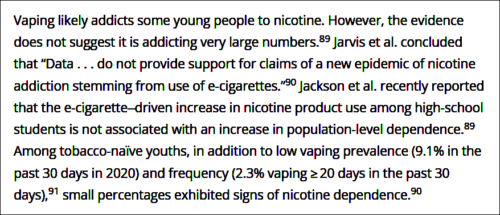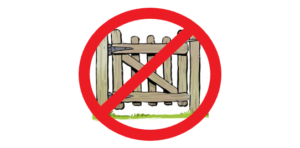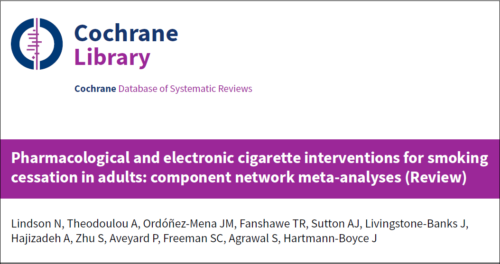
FACT CHECK. Is the Health Minister telling porkies … again?
Posted on September 14, 2023 By Colin
THE MINISTER FOR HEALTH is on a mission this week, waging a war on vaping. In an effort to "make Australia great again" in the field of tobacco control he has committed to stamp out “this public health menace”.
Mark Butler makes vaping sound scary, but are his bold claims evidence-based? Many of them are not.
I fact checked several of his claims and found that truth is the first casualty of his war.
CLAIM 1
“vaping is recruiting a new generation of nicotine addicts”
FALSE
Nicotine dependence from vaping by young Australians is rare. Frequent vaping is needed to develop nicotine dependence and most vaping by young never-smokers is experimental, occasional and short term.
Two recent studies here and here have found that <2% of 14-17-year-old Australians who have never smoked, vape nicotine frequently enough (at least weekly) to be at-risk of developing nicotine dependence.
Most frequent vaping is by young people who were already smokers and may have already been addicted to nicotine. For them, vaping is likely to be beneficial.
A review by 15 eminent former presidents of the Society for Research on Nicotine and Tobacco concluded:

See here for more.
CLAIM 2
“vaping is acting as a gateway to cigarettes”
FALSE
This old chestnut rates well in focus groups but has been disproven. In fact, there is good evidence that vaping by young people is reducing smoking. Vaping and smoking are substitutes and vaping is diverting young people AWAY FROM smoking (eg here, here, here, here).

The gateway theory predicts that vaping will increase smoking rates in young people. However, we are seeing the opposite of this. In countries where vaping is readily available such as the UK, US and New Zealand, the decline in youth smoking rates has accelerated.
Young people who try vaping are more likely to try smoking because they share risk factors that lead to both vaping and smoking ('common liability'). But this does not mean that vaping caused them to take up smoking. Some young non-smokers who try vaping may go on to try smoking. However, far more move in the other direction, i.e, many young smokers or would-be smokers turn to vaping instead.
Furthermore, there is growing evidence that teens who vape first (before smoking) are less likely to smoke later, compared to those who smoke first (eg here, here, here).
More here.
CLAIM 3
“We know that the tobacco industry is behind e-cigarettes and vaping”
FALSE
Invoking the evil tobacco industry triggers a powerful emotional response. We all hate the tobacco industry. However, they have absolutely no role in youth vaping in Australia.

Young Australians exclusively use illegal Chinese disposables imported from China. Brands such as IGET, HQD and Gunpod are easily available from hundreds of black-market outlets. Only a handful of tobacco company vapes are sold in Australia, and are only available to adults with a doctor’s prescription from pharmacies.
CLAIM 4
Doubling down on a failed regulatory model will work this time
FALSE
Most experts agree that doubling down on a failed regulatory model will not work. However, when challenged about this at a press conference this week, the Minister said that criticism of his plan was simply a ploy by “stakeholders with a pretty clear interest”, particularly “stores that are selling vapes right now.”
No. Members of the Minister’s own peak advisory group on drug and alcohol matters, the Australian National Advisory Council on Alcohol and Other Drugs (ANACAD) disagree with him. Some have expressed the view that the current black market and increased youth vaping were created by the current flawed regulatory model and that further restrictions will only make it worse.
As one ANACAD expert put it
Doubling down on regulation and enforcement (despite the problem being a failure of regulation in the first place) is the wrong response
In addition, 44 leading Australian and New Zealand tobacco control and addiction experts wrote an open letter to the Health Minister expressing the same concerns and asking him to reconsider his draconian proposal.
CLAIM 5
Evidence is lacking that vaping helps smokers quit. It is a “public health menace” and we need to “stamp it out”
FALSE
Wow! That's a whopper. In fact, vaping is the MOST effective quitting aid and is playing a major role in reducing smoking rates and improving public health.
A Cochrane review published in 2022 found high quality evidence that vaping is significantly more effective than nicotine replacement therapies such as patches and gum. A further Cochrane review published this week analysed 319 randomised controlled trials (RCTs) of all medications used to help smokers quit and concluded that vapes and Champix are the two most effective single treatments.

Vaping works RCTs but also in real world settings, such as observational studies, population studies, declines in national smoking rates, studies of ‘accidental quitting’ and naturalistic randomised controlled trials.
Vaping is increasing quit attempts and reducing national smoking rates where it is readily available. In Australia smoking declined by only 5% over the last 4 years. However, over the same period, the smoking rate declined by 39% in New Zealand, 33% in Great Britain and 18% in the US. Vaping is likely to be a major contributor to this accelerated decline. See here for more.
In response to the recent release of UK smoking figures, Professor Peter Hajek said
E-cigarettes are not only helping smokers quit, they also deflect potential smokers away from cigarettes. Low-risk nicotine products are the best tool we ever had for getting finally rid of smoking-related cancers, heart and lung disease
Vaping is a huge public health opportunity. “Stamping it out” would be a disaster for adult smokers.